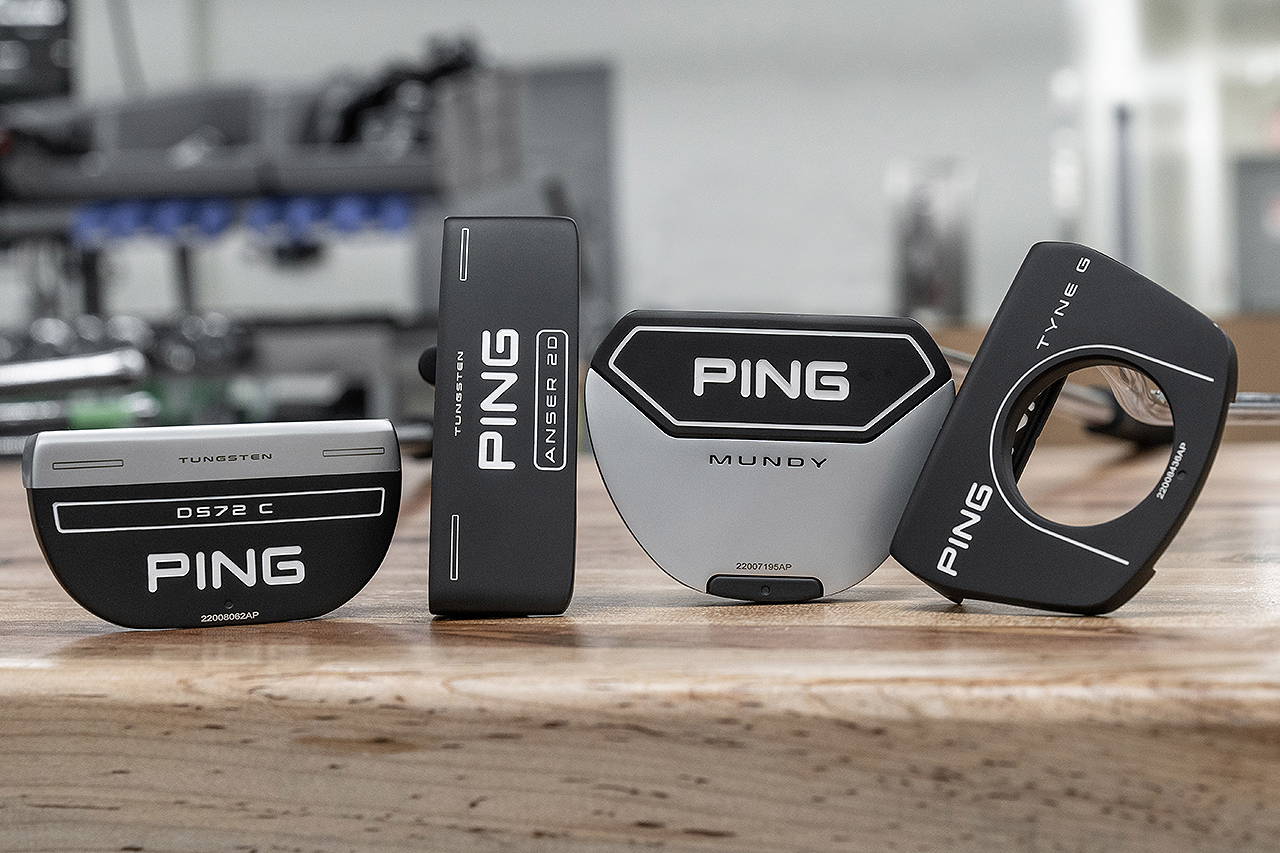Gear: Ping putters (2022)
Price: $300 each
Specs: Milled stainless steel, tungsten inserts and aluminum bodies with 10 head styles available, including heel-toe weighted blades, mid-size mallets and high-MOI mallets.
Who they are for: With 10 different head styles to choose from, along with different neck and hosel configurations, Ping is trying to offer look and feel options that can appeal to a wide variety of players.
The Skinny: Instead of spreading one technology across a range of putters in a family, Ping’s newest putter offerings have been built to provide options for golfers who have different types of strokes and who prefer different shapes and alignment aids. With the help of a fitter, there should be something to please almost every golfer here.
The Deep Dive: The bedrock of Ping Golf was created when its founder, Karsten Solheim, developed the Ping Anser putter back in 1966. He had made putters before that model, but the Anser put the company on the road to being one of the most successful and influential brands in the industry.
But a funny thing started happening about five to 10 years ago. Ping started developing a reputation as a brand known for extremely stable, high-performing drivers after it brought out the G, G400, and, more recently, the G410 and G425 drivers. Bubba Watson, Viktor Hovland, Tony Finau, Cameron Champ, Tyrrell Hatton and others have used those clubs to win PGA Tour events, major championships and Ryder Cups. They also proved popular with recreational golfers and influential in the industry.
As great as that is for the Phoenix-based company, the wood success may have started to overshadow Ping’s putter heritage. The release of the PLD Series, 2021 Putters and PLD Custom program have helped to re-establish Ping as elite putter brand to many players, reminding them in addition to giving your more yards off the tee, Ping can provide you more feel and control on the greens.
Now Ping is bringing out 10 new putter models and not pigeonholing them into a family. With a combination of chrome and dark finishes, they are cosmetically cohesive, but the goal with the release of these clubs is to create a stable of putters that can provide golfers with several options that will optimize their stroke but give them choices when it comes to looks and feel.
“What’s most exciting about our new Ping putter models is how different they are from each other,” said John K. Solheim, Ping’s CEO and president. “For example, several of the new models offer milled faces for a firmer feel, and others provide a softer feeling insert.”
While there are heel-toe weighted blade, mid-size mallets and ultra-stable high-MOI mallets, Ping classifies these putters by the stroke type they are designed to help: straight, slight-arc and strong arc. Putters for golfers who make for slight-arced strokes have some toe hang (approximately 30 degrees), while putters designed for golfers who have a strong arc have significant toe hang and models for straight-stroke players are face balanced.

